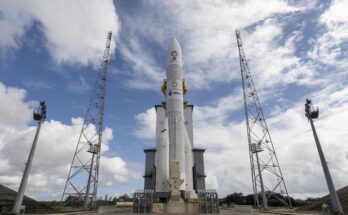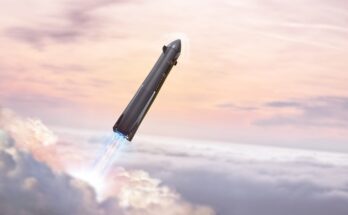by Bill Ostrove, Space Systems Analyst, Forecast International.
Over the next 10 years, the launch industry will be greatly shaped by how the United States pursues its ambitious space exploration goals. After the Columbia disaster in 2003, then-U.S. President George W. Bush set a new course for human space exploration in the United States. Under Bush’s plan, which eventually became known as Project Constellation, U.S. astronauts would return to the moon and eventually land on Mars. To meet the goals of that program, NASA began development of a new and two new heavy-lift launch vehicles – one that would carry the CEV and a larger one that would carry supplies for lunar and Martian exploration.
By 2009, the program had suffered from a number of delays and cost increases. The Review of U.S. Human Spaceflight Plans Committee released a report in late 2009 recommending that NASA chart a new course, ending massive government-run programs and relying instead on commercial companies to transport humans to and from space. Under the committee’s plan, NASA would use the resultant savings to develop new technologies that could be used for future human space exploration missions.
In the FY11 budget request that NASA submitted to Congress in February 2010, the agency proposed ending Project Constellation. Under the proposal, NASA would instead hire private companies to develop and operate spacecraft that would transport astronauts to and from the International Space Station. At the same time, the agency would focus on technologies that could be used later to explore parts of the solar system such as the moon, Mars, and near-Earth asteroids.
The new program, championed by President Barack Obama, was controversial, with many members of Congress opposed to giving up an “in-house” manned space program. They cited the loss of jobs and U.S. international leadership in space activities as major reasons to maintain development of a launch vehicle. Under a compromise that was reached, NASA will continue to fund private companies while also developing its own launch vehicle, known as the Space Launch System (SLS). NASA plans to use elements from both the Space Shuttle program and Ares rockets (being developed under the Constellation program) in the vehicle’s design. Congress has demanded that NASA conduct a first launch by 2016, but NASA says that date is too ambitious. NASA is projecting a launch date of 2017; FI believes first launch will more likely take place in 2018. More regular launches of the SLS will likely begin to take place in the early to mid-2020s.
Human spaceflight will continue to drive launch vehicle production in other countries as well. Currently, the only countries outside of the U.S. capable of carrying humans into space are Russia and China. Russian Soyuz launch vehicles are used to carry Soyuz spacecraft to the International Space Station. Originally only planned to carry Russian cosmonauts to the space station, Soyuz will now carry all crew members to the ISS, increasing production.
China also has ambitious human space exploration plans. The country is currently carrying Shenzhou capsules using its Long March 2F launch vehicle. Eventually, Beijing plans to build a small space station to conduct experiments and to house crew in. While the Long March 2F will continue to be used in the short term, larger, more capable spacecraft may be used in the future.
A military history enthusiast, Richard began at Forecast International as editor of the World Weapons Weekly newsletter. As the Internet grew in importance as a research tool, he helped design the company's Forecast Intelligence Center and currently coordinates the EMarket Alert newsletters for clients. Richard also manages social media efforts, including two new blogs: Defense & Security Monitor, covering defense systems and international issues, and Flight Plan, which focuses on commercial aviation and space systems. For over 30 years, Richard has authored the Defense & Aerospace Companies, Volume I (North America) and Volume II (International) services. The two books provide detailed data on major aerospace and defense contractors. He also edits the International Contractors service, a database that tracks all the contractors involved in the programs covered in the FI library. More recently he was appointed Manager, Information Services Group (ISG), a new unit that encompasses developing outbound content for both Forecast International and Military Periscope.



